
LONG TERM REVIEW
X-Fusion Trace HLR
X-Fusion Trace HLR
For 11 months the X-Fusion Trace has served up 140mm of suspension travel on my Kona Honzo, an Intense Carbine 29 and a 2016 Cannondale Jekyll.
Over that time it's received a full tear down from SuspensionWerx and a couple of 15 minute basic services of the lowers where I cleaned and re-lubed the fork seals and foam rings. The bled Roughcut HLR damper still has a broad range of adjustment and the air system is working as new but realistically I'm at the point where a full rebuild, and fork seals, are in order.

Look ahead. The X-Fusion Trace is good at soaking up chatter while at the same time riding high in its travel ready to soak up the next wheel eater. Photo: Dave Smith
Price aside, the Trace is an excellent fork that goes toe-to-toe with its direct competition on the trail. Those would be forks like the Fox 34 Float FIT4, RockShox Pike RCT3 and DVO's Diamond.
After a long break in period, which I consider a positive reflection of the build quality, the Trace initializes more freely than my initial experience but I would definitely stand by my previous statement that it has an 'old school' feel that is firmer off the top compared to showroom-supple forks like the Pike. On the trail this is not an issue.
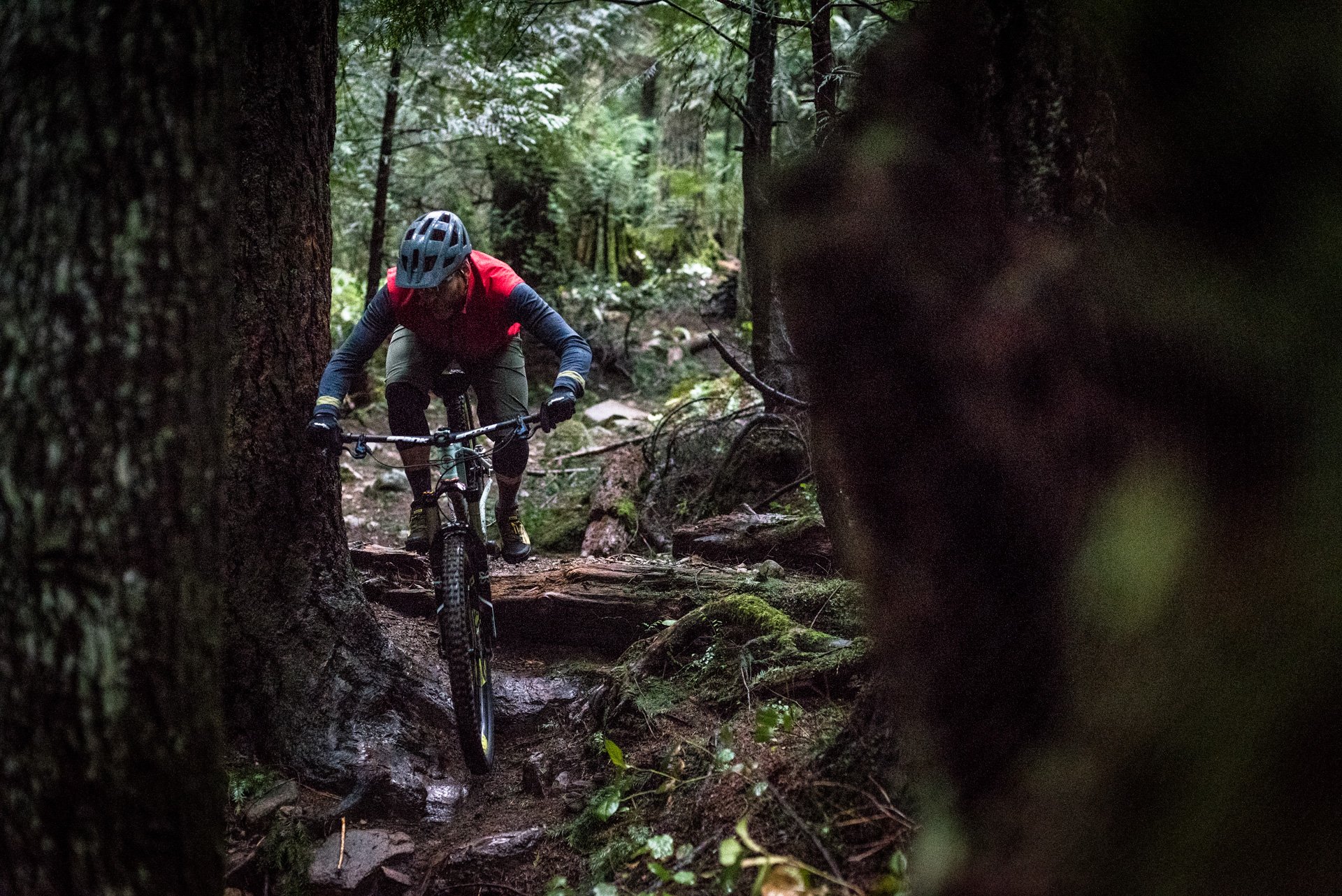
The Trace initializes more freely after a long break in period and still sits high in its travel when cruising. It doesn't have the most showroom-supple feel but on the trail it is comparable to anything in its class. Photo: Dave Smith
Once I factor in the $800 (USD) | $1000 (CAD) price tag it's a fork that I've recommend to a number of my friends over the review period. The out-of-the-box build quality is as good as anyone's, the adjustments are extensive, it's designed to last for years and the performance is excellent.
Full Metal Fourchette
The X-Fusion Trace is not the best 'budget' fork on the market. That's because it is not a budget fork.
As an aside, that trophy belongs to the RockShox Recon Silver RL Solo Air at $350 CAD. The Recon is stiff enough thanks to a thru-axle and the portly steel stanchions. It is smooth enough, with the seals well lubed, and supportive enough to help me survive some pretty nasty trails. It's a surprisingly capable fork that will leave any serious mountain biker considering a sooner-than-later upgrade.

The X-Fusion Trace offers a lot of value - quality, performance, price - but it isn't a 'budget' product. The guts are all machined aluminum, the crowns haven't started creaking, stiffness : weight ratio is very good. Photo: Andrew Major
What's my point? I've heard the Trace HLR mention in conversations about budget suspension when in reality it is a full featured trail fork at a lower price than a lot of its competitors. There is a big difference between value and budget and the X-Fusion is simply a lower priced fork with full-throttled performance.
In terms of long-term ownership, X-Fusion takes pride in a no-corners-cut "metal beats plastic" design philosophy.

The guts of the X-Fusion Trace HLR plainly portray the level the quality of the product. Photo: Andrew Major
The fork is still nice and tight after 11 months and for a full break down on the internals, please check out the teardown from several months ago.
Fork Settings - Full Suspension
My settings varied depending on which bike the Trace was mounted on. I also tended to back off the high-speed compression a bit when trails became faster and smoother. I've been hovering around 185-lbs for the test period.
As with any fork I've ridden, when the temperature dropped the rebound damping had to be sped up a bit to keep to maintain optimal traction.
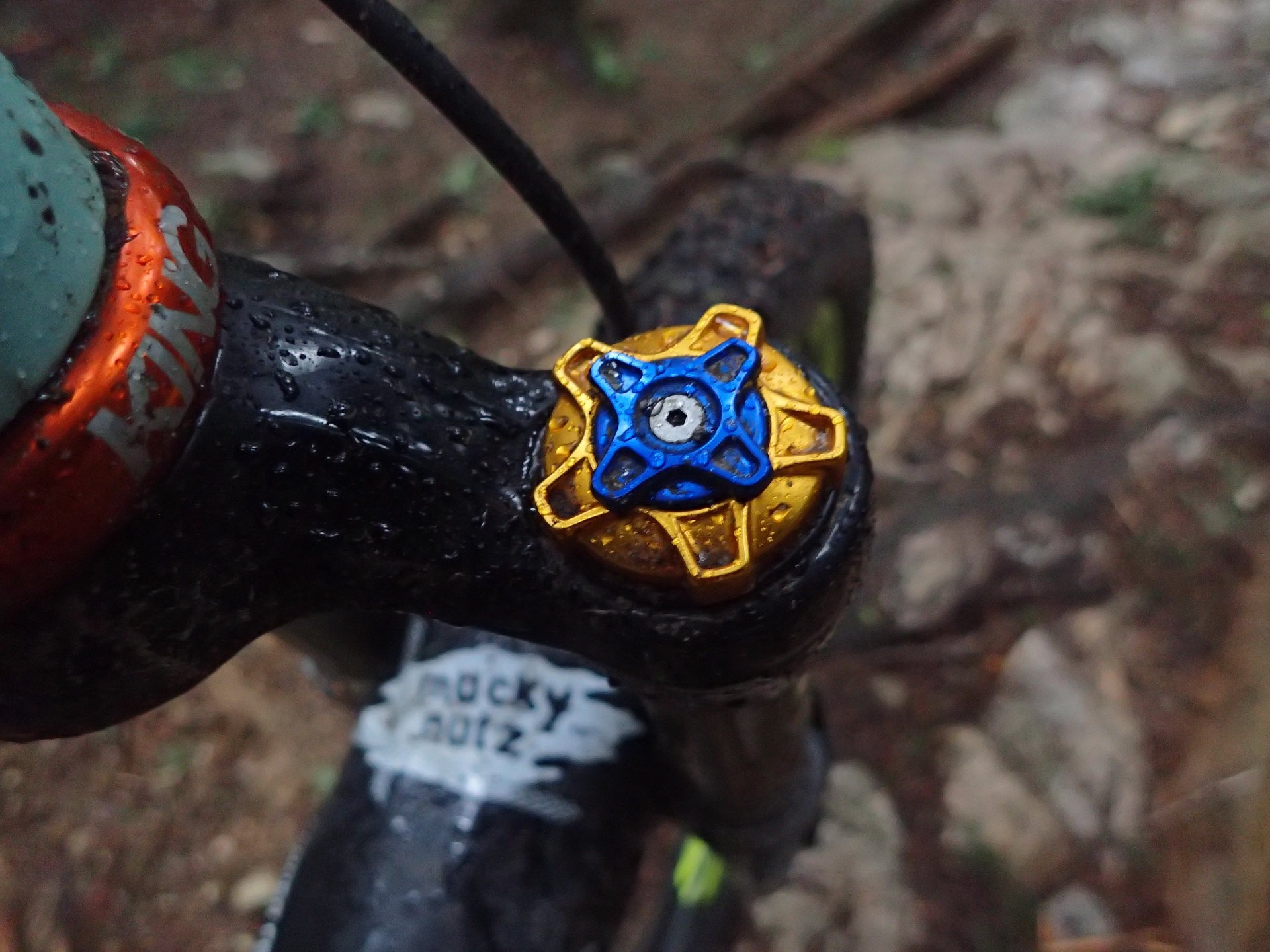
The X-Fusion Trace HLR: high speed compression, low speed compression, and rebound adjustment. Rebound is oriented on the bottom of the right leg with the blue low speed compression knob and gold high speed compression knob at the top.
I ran a similar setup on both the Jekyll and Carbine 29. Air pressure at 100psi for ~20% sag. From closed (maximum) I ran the low speed compression at 5 clicks and the high speed compression at 6 clicks. Rebound to preference.
Setup this way the fork would ride high in its travel while still absorbing a decent amount of light trail chatter and maintaining excellent traction. Both the Jekyll and Carbine need to run ~30% sag rear - much more than I run with most full suspension bikes - but as a system the suspension felt balanced in both cases.

It sounds strange to ride an all mountain full suspension bike with more travel in the rear than front but on the trail the Trace worked excellently as a system with the Dyad on the Jekyll. Photo: Kaz Yamamura
The fork is not as stiff as a Fox 36, RockShox Lyrik or the similar-in-stature Öhlins RXF 34. I found this was noticeable but negligible on stiff carbon bikes but riders particularly concerned with fork stiffness on 29'ers or long travel 27" bikes may prefer to look to at one of the aforementioned models.

When the trails get steep or chunky and I'm hard on the brakes the Trace HLR chassis is noticeably, but in my opinion negligibly, less stiff compared to the stoutest single crown options from Fox, RockShox and Öhlins.
Fork Settings - Hardtail
I tried running the X-Fusion Trace on my hardtail set at 120mm, since it rides quite high in its travel, but ended up settling on 140mm travel for the Honzo as well.

The Trace has been on the front of my Honzo for months. With the way hardtail geometry changes in steeper terrain, a fork that rides high in its travel is a definite benefit. Photo: Andrew Major
On the Honzo I ran the air pressure at 90psi for about 24% sag. Again my damper settings are from full closed (maximum). I ran the LSC at -6 clicks and the HSC at -3 clicks which actually adds quite a bit of support starting around the mid-stroke.
On the HSC there were exceptions for faster and smoother trails, like Squid Line at Sumas, John Deer on Seymour and Expresso on Fromme, where I would run -6 clicks for a more linear use of the travel.
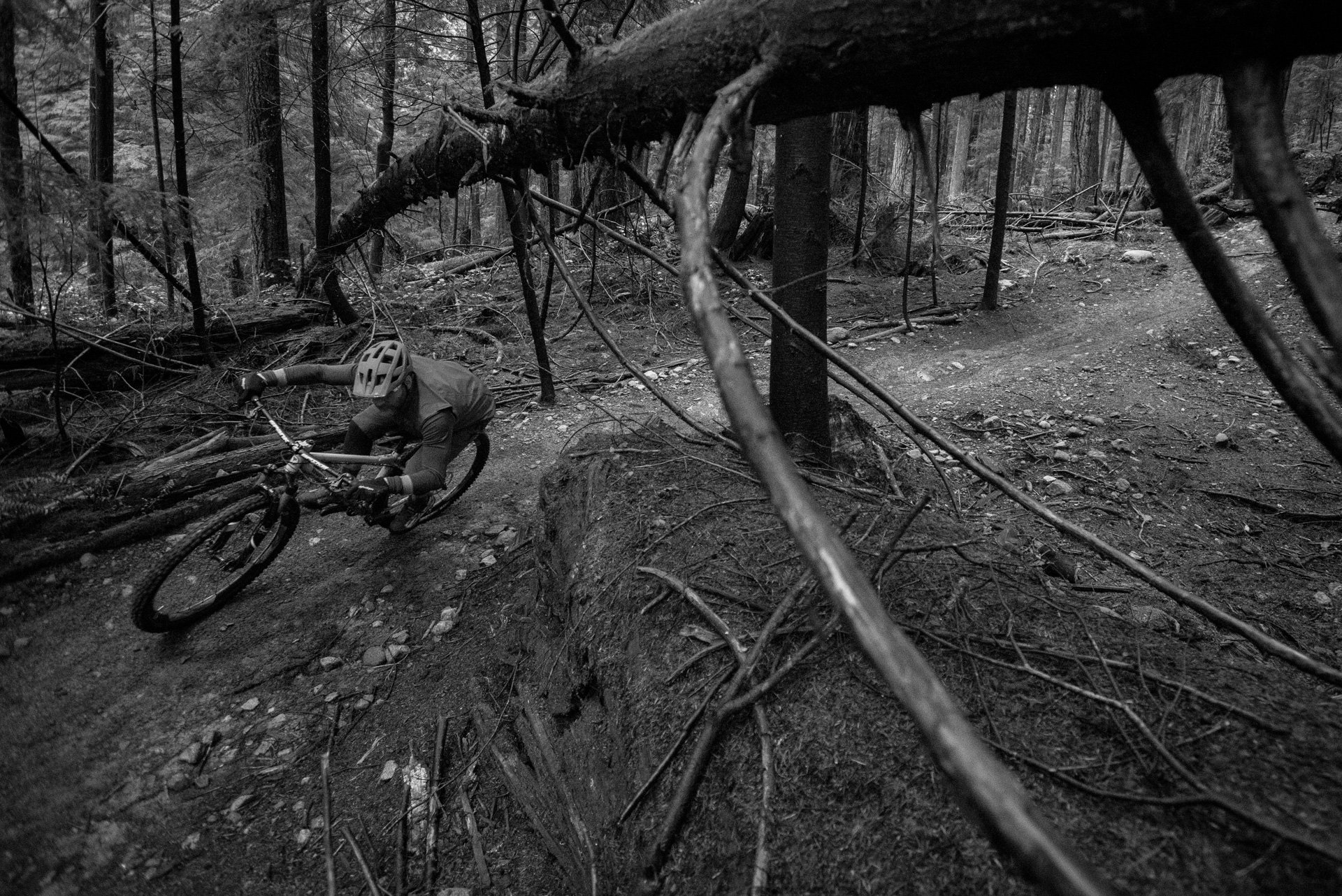
On the hardtail I ran the Trace HLR damper at LSC -7 clicks and HSC -3 clicks except on faster and smoother trails. For less chunky riding I ran the HSC at -6 clicks for a more linear ride. Photo: Dave Smith
Improvements
I don't mind the look of the stanchions as they are but a few riders have pointed out that it looks dated in a sea of forks with black-anodized stanchions. X-Fusion was showing their longer travel Metric fork with black stanchions at Interbike and it seems to me to be a no-brainer to change over.
It seems there are two types of riders: those that don't care and those that prefer black. Might as well accomodate both of them.

X-Fusion was showing black stanchions and a very sweet, ultra durable, rough-to-the-touch paint finish at Interbike 2016. I wish they used it on all their forks intended for aggressive riding. Photo: Fergs
At Interbike, X-Fusion was also showing a very sweet, unique, textured paint finish on their Metric that is said to be significantly more durable than regular paint, in addition to a unique matte finish. I didn't have any issues with the finish durability on the Trace but the rough-to-the-touch finish on the Metric was awesome.
I hope it makes production on all their forks intended for aggressive uses.

The Trace HLR is a fork that has to be ridden to be appreciated. It has the adjustments, features, and ride quality of significantly more expensive forks.
Conclusions
The X-Fusion Trace HLR is a top end fork that has to be ridden on trail to be appreciated. It uses a simple coil negative spring air system with a bleed damper featuring high and low-speed compression and rebound adjustment.
It represents a design philosophy that focuses on machining parts from aluminum instead of plastic and the quality of manufacturing is on par with anything on the market.
It is not a budget fork. It is a high-performance fork at a lower price than many competing products that have significant OE spec and large marketing budgets. In short, I think it is a great option for anyone trying to keep pace with their friends' champagne bikes on a craft beer budget.
NSMB.com Teardown
NSMB.com First Look
X-Fusion Website



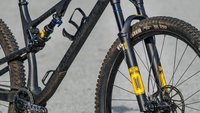

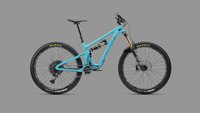

Comments
Tehllama42
7 years, 1 month ago
I had to think about which of those two types of riders I am... but I remembered that a mix of matte and glossy black and dark greys is always what I decide on if I have a choice.
At this point, I'm just amazed X-fusion hasn't been picked up as an OEM for more brands, especially with upstart direct order brands. O2/Trace/HiLo with SLX on a competent frame (e.g. Marin Hawk Hill) would completely embarrass most of the mid-price-range offerings from bigger brands.
Reply
Andrew Major
7 years, 1 month ago
Ha. I feel like 85%+ of riders would self identify in the function-over-form category... BUT, 90%+ really care.
I'll either have a section in my Hawk Hill review - or possibly a separate piece referencing the Bike - talking about targeted upgrades. Instead of the usual operation of 'every parts bumps up a level' leave me the Deore/SunRace drivetrain, O2 shock, awesome geometry and underrated Acera brakes and give me some lighter high-value wheels (Aeffect), a best in class value fork like the Slant HLR and a Manic dropper post. I'll get the best riding outcomes per dollar and to me that's disruptive performance/value.
Reply
Andrew Major
7 years, 1 month ago
That should say Sweep HLR (27") not Slant HLR (26")
Reply
Brian Lapham
7 years, 1 month ago
@Andrew Major
Would you surmise that any other of X-Fusion's forks with the HLR damper will be just as good? Im thinking the McQueen for the boosted crowd.
Reply
Andrew Major
7 years, 1 month ago
Hi Brian,
The HLR damper being a bled unit as long as the oil volumes and valving tune are the same - which they are with the McQueen HLR - performance will be identical.
Air springs of the same design can feel quite different translated from one fork to another if the volumes are changing; however, since the McQueen HLR is using 34mm OD stanchions and X-Fusion is very smart about inter-compatibility in marketing (less SKUs | less costs) I think it would be fair to say that a 140mm McQueen is essentially a boosted Trace HLR and performance will be the same.
The nice thing about systems that use a coil negative spring is you can add a few ml of oil to the primary air spring if you want the fork a bit more progressive.
Reply
Andrew Major
7 years, 1 month ago
*manufacturing not marketing
Reply
dave kidd
7 years, 1 month ago
My experience with X-fusion is with the HiLo post, which I ran for two seasons without incident or even thought about because it worked so smoothly, and the Vengeance HLR
I picked up the Vengeance last year as a late model close out because I always wanted to give their forks a shot. It's unlikely i'll stray far from the company again, especially now that they have all black ;)
The fork is just everything I never expected from it, for something that was a few years older than the current crop, it not only keeps up in spades, but has more adjustment than a pike or lyrik and seems smoother than a 36. Even a lifty at whistler commented on how it felt when as i was stopped mean feet from being able to get off and my bike was already free of the lift. Great company.
Reply
Cristóbal Cristóbal
7 years, 1 month ago
Please show how to do maintance to the HLR damper. I don't trust the official X-Fusion service center in my country. They are kinda messy, haha.
Reply
Andrew Major
7 years, 1 month ago
Hi Cristobal, thanks for reading. There are lots of 'how to' videos out there; if you can bleed a Charger or FIT damper the HLR will be straight forward.
I mention it in the teardown article that's linked in this piece but that certainly isn't intended as a how to (https://nsmb.com/articles/x-fusion-trace-teardown/)
Cheers,
Reply
Cristóbal Cristóbal
7 years, 1 month ago
Since is similar to those other dampers, I think it would be easy to find a good shop that can do the job or learn to do it myself (I love mechanical work although it doesn't always end well for my bike). Thanks!
Reply
Andrew Major
7 years, 1 month ago
Cristobal, I call that "the price of an education". I've killed enough stuff over the years "fixing" it...
...if you're careful with the tools and don't assault anything if you get stuck I think most bike mechanics understand riders' desires to work on their stuff. A gentle ribbing is of course absolutely deserved!
Reply
Cristóbal Cristóbal
7 years, 1 month ago
Hahaha. Thanks for the comment, Andrew.
Reply
pedalhound
7 years, 1 month ago
I have been riding a Trace for a few years now and it's been a great fork...just gotta service them once a year.
Reply
Andrew Major
7 years, 1 month ago
Definitely full service once a year. For anyone riding 'a lot' I'd recommend dropping the lowers 1-2 times in between the full services to clean and re-lube the seals (takes 10-15 minutes). It will significantly increase performance between full services.
That's not X-Fusion specific. I'd recommend it for any fork.
Reply
Please log in to leave a comment.